
Post-Conference Report for the WSEAS Conferences:
ICC '08, ICS '08, ICCOM '08, ICCOMP '08, EE '08, EMESEG '08, UPT '08, CUHT '08
Heraklion, Crete Island, Greece, July 22-25, 2008
The WSEAS honored
Prof. Joseph Sifakis
Turing Award 2007
http://www.acm.org/press-room/news-releases/turing-award-07/
elevating him to the rank of the WSEAS Fellow.
Up to now only Prof. Zadeh and Prof. Sifakis have received this recognition.
The ceremony took place during the WSEAS CSCC 2008 (12th WSEAS CSCC, Heraklion, Crete, Greece, July 22-25,2008) and was under the aegis of the Deputy Minister of Defense of Greece, Mr. I.Plakiotakis
See Nobel of Computing:
http://www.cmu.edu/homepage/practical/2008/winter/nobel-of-computing.shtml
Also:
http://www-verimag.imag.fr/~sifakis/
Prof. Sifakis gave one hour Lecture Keynote Speech on Wednesday, July 23, 16:00-17:00 especially for the WSEAS Members and WSEAS Friends

In the Photo (from left):
I)
Prof. Sifakis, WSEAS Fellow, Turing Award 2007,
CNRS/Verimag, France
II) Mr. Ioannis Plakiotakis, Deputy Minister of
Defense of Greece, (M.Sc. in Biochemical Engineering and M.Sc. in
Economics) , see www.plakiotakis.gr
III) Prof. Nikos Mastorakis, Honorary Professor of
Univ. of Cluj-Napoca, Romania,
Prize of Excellence from Romanian Academy of Science, Bucharest, Romania,
and Prof. at the ASEI (Military Institutes of University Education),
Hellenic Naval Academy, Greece
WSEAS Executive Director (former WSEAS President)



Over than 900 delegates attended the WSEAS conferences CSCC, EE, CUHT, EMESEG and UPT
(for CSCC
only: 1338 papers were received. From them the WSEAS Organizing Committee
approved only 641 papers)

over than 800 delegates attended this WSEAS
conference
Dr. Joseph Sifakis
WSEAS Fellow
Turing Award 2007
CNRS/Verimag
Embedded systems are components integrating software and hardware that are jointly and specifically designed to provide given functionalities, which are often critical. They are used in a very wide array of application areas - including transport, consumer electronics / electrical appliances, energy distribution, manufacturing systems, etc.
Designing embedded systems requires techniques taking into account extra-functional requirements regarding optimal use of resources such as time, memory and energy while ensuring autonomy, reactivity and robustness.
Jointly taking into account these requirements raises a grand scientific and technical challenge: extending Computer Science with paradigms and methods from Control Theory and Electrical Engineering. Computer Science is based on discrete computation models, which are by their nature are very different from the analytic models used in other engineering disciplines, because they do not encompass physical time and resources.
We discuss the main aspects of this challenge and their associated research directions for different areas such as modelling, programming, compilers, operating systems and networks.
Brief R?um?/span>
curriculum vitae - Joseph Sifakis
Joseph Sifakis is CNRS researcher and the Founder of Verimag laboratory (http://www-verimag.imag.fr/), in Grenoble, France. He studied Electrical Engineering at the Technical University of Athens and Computer Science at the University of Grenoble. Verimag is a leading research laboratory in the area of critical embedded systems. It developed the underlying theory and technology for the SCADE tool, used by Airbus for the design and validation of its critical real-time systems, and is becoming a de facto standard for aeronautics. Verimag has a lasting and strategic collaboration with ST Microelectronics, France Telecom R&D, and Airbus, through which numerous results on validation and testing have been transferred. Joseph Sifakis is recognized for his pioneering work on both theoretical and practical aspects of Concurrent Systems Specification and Verification. He contributed to emergence of the area of model-checking, currently the most widely-used method for the verification of industrial applications. His current research activities include component-based design, modeling, and analysis of real-time systems with focus on correct-by-construction techniques (http://www-verimag.imag.fr/~sifakis/). Joseph Sifakis has broad experience with industry, notably though joint projects with partners such as Astrium, the European Space Agency, France Telecom, ST Microelectronics and he has also been active for many years in consulting. Joseph Sifakis is the Scientific Coordinator of the European Network of Excellence ARTIST2 on Embedded Systems Design. (http://www.artist-embedded.org/). This network gathers 35 of the best European teams in the area, and aims to produce innovative results for cost-effective design of dependable embedded systems. It will also promote innovative methods safe and secure systems, notably through cooperation with key European industrial partners such as Thal?, Airbus, Ericsson, Philips, and ST Microelectronics. Joseph Sifakis is the chair of "Chamber B" (Public Research Organisations) of ARTEMISIA, which is the Industrial Association within the ARTEMIS European Technology Platform on Embedded Systems (http://www.cordis.lu/ist/artemis/). Joseph Sifakis is the director of the CARNOT Institute "Intelligent Software and Systems" in Grenoble. Joseph Sifakis is a member of the editorial board of several journals, co-founder of the International Conference on Computer Aided Verification (CAV) and a member of the Steering Committee of the EMSOFT (Embedded Software) conference. Joseph Sifakis has received with Ed Clark and Allen Emerson for their contribution to Model Checking, the Turing Award for 2007 (http://awards.acm.org/homepage.cfm?srt=all&awd=140). He is also the recipient of the CNRS Silver Medal in 2001. Joseph Sifakis is a WSEAS Fellow.
OTHER WSEAS KEYNOTE LECTURES
Distributed Estimation Using Wireless Sensor Networks
Professor Georgios B.
Giannakis
University of Minnesota
USA
E-mail: georgios@ece.umn.edu

Abstract: Envisioned applications of wireless sensor networks (WSNs) include surveillance, monitoring and tracking tasks. These motivate well decentralized estimation and smoothing of deterministic and (non)stationary random signals using (possibly correlated) observations collected across distributed sensors. In this talk we present state-of-the-art algorithms for consensus-based distributed estimation using ad hoc WSNs where sensors communicate over single-hop noisy links. The novel framework reformulates basic estimation criteria such as least-squares, maximum-likelihood, maximum a posteriori, and linear mean-square error, as decomposable, constrained, convex optimization problems that are amenable to distributed solutions. The resultant distributed estimators are provably convergent to their centralized counterparts and robust to communication noise. Besides stationary, the framework encompasses adaptive filtering and smoothing of non-stationary signals through distributed LMS and Kalman filtering.
Brief Biography of the Speaker:
G. B. Giannakis received his B.Sc. in 1981 from
the Ntl. Tech. Univ. of Athens, Greece and his M.Sc. and Ph.D. in Electrical
Engineering in 1983 and 1986 from the Univ. of Southern California. Since 1999
he has been a professor with the Department of Electrical and Computer
Engineering at the University of Minnesota, where he now holds an Endowed ADC
Chair in Wireless Telecommunications. His general interests span the areas of
communications, networking, signal processing, estimation and detection theory
-- subjects on which he has published more than 270 journal papers, 450
conference papers, two research monographs and two edited books. Current
research focuses on wireless networks, complex-field and space-time coding,
ultra-wideband and cognitive radios, cross-layer designs and wireless sensor
networks. He is the (co-) recipient of six best paper awards from the IEEE
Signal Processing (SP) and Communications Societies (1992, 1998, 2000, 2001,
2003, 2004) and also received the SP Society's Technical Achievement Award in
2000 as well as the EURASIP Technical Achievement Award in 2005. He is an IEEE
Fellow since 1997, and a frequent participant in WSEAS Conferences.
Keynote Lecture
Tyflos : A Wearable System-Prototype for Assisting Visually Impaired
Dr. Nikolaos G.
Bourbakis
Director, Information Technology Research Institute
Wright State University
College of Engineering and Computer Science
OBR Distinguished Professor of Information Technology
Department of Computer Science and Engineering
3640 Colonel Glenn Highway
Dayton, Ohio 45435-0001
United States of America
Phone: (937) 775-5138
Fax: (937) 775-5127
E-mail:
nikolaos.bourbakis@wright.edu
URL:
http://www.cs.wright.edu/itri/bourbakis/

Abstract: Human eyes receive more than 75% of the total information
accessible to the human senses.
?There are approximately 45 million blind individuals world-wide according to
the World Health Report. Vision loss can be very traumatic, leading to
frustration and depression. According to the American Foundation for the Blind
(AFB), the rate of unemployment among legally blind individuals of working age
residing in the United States (58%) is much greater than that of individuals
with no functional limitations (18%). Employment opportunities and independence
are scarce for visually impaired individuals. This is unfortunate in view of the
fact that ingenious devices [IEEE Spectrum] and information technology (IT)
strategies can be developed to help people overcome these barriers and to pursue
educational opportunities that will allow them to become productive members of
society.?
In this talk technological efforts are presented that have the same goal
assisting and increasing the visual impaired people?s independence in their
working and living environment, and reducing their social neglect ness. In
particular, the research effort (called Tyflos) is presented here that is an IT-
based wearable system-prototype. It consists of a pair of dark glasses on which
two tiny vision cameras, an ear speaker and a microphone are attached. The
cameras are connected with a portable computer that carries intelligent software
programs. The cameras, under the user?s command, capture images from the
surrounding and convert them via software programs into audio or vibrations. The
current versions of Tyflos is used as 1) a reader by reading books or the blind
user via audio conversion and 2) a navigation by converting 3D images into
vibrations for navigation.
Brief Biography of the Speaker:
Nikolaos G. BOURBAKIS (IEEE Fellow) received his PhD in computer engineering and
informatics in 1983. He currently is the Associate Dean for Engineering
Research, a Distinguished Professor of Informatics and the Director of the ATR
Center at WSU. He has directed several research projects (Applied AI, Image
Processing & Machine Vision, Visual Autonomous Navigation, Information Security,
Bio-Informatics, Biomedical Engineering) funded by government and industry, and
he has published near 300 papers in International refereed Journals, Conference
proceedings and book-chapters. Previous working places: SUNY, IBM, UP, GMU. He
is actively involved as an Associate Editor in several IEEE and International
Journals and General Chair in numerous International IEEE Conferences. He is the
EIC of the Artificial Intelligence Tools Int. Journal (WSP) and the new upcoming
Bioinformatics Engineering Journal. He is an IEEE Computer Society Distinguished
Speaker, and NSF University Research Programs Evaluator, an IEEE Computer
Society Golden Core Member. He has received several high prestigious awards,
some of them are: IBM Author recognition Award 1991, IEEE Computer Society
Outstanding Contribution Award 1992, IEEE Outstanding Paper Award ATC 1994, IEEE
Computer Society Technical Research Achievement Award 1998, IEEE I&S Outstanding
Leadership Award 1998, IEEE ICTAI 10 years Research Contribution Award 1999,
IEEE BIBE Leadership Award 2003, ASC Recognition Award 2005. This was the first
participation of Prof. Bourbakis in WSEAS.
Algorithms for Rendering Depth of Field Effects for Synthetic Image Generation and Computational Photography
Dr. Brian A. Barsky
Professor of Computer Science
Affiliate Professor of Optometry and Vision Science
Member of Joint Graduate Group in Bioengeering, UCSF/UCB
Affiliate of Berkeley Center for New Media
Member of Berkeley Institute of Design
University of California, Berkeley
tel +1 (510) 642-9838
E-mail: barsky@cs.berkeley.edu
Web Page:
http://www.cs.berkeley.edu/?barsky/

Abstract: Depth of field refers to the swath through a 3D scene that is
imaged in acceptable focus through an optics system, such as a camera lens. It
is a vitally important component of real photographs, and is useful as a tool
for drawing the viewer's eye to the important part of the image. Depth of field
is equally important for computer-generated images.
This talk will provide an explanation of the phenomenon of depth of field and a
survey of a variety of techniques to render depth of field effects in computer
graphics, with particular attention devoted to the trade-offs between image
quality and algorithm efficiency.
Algorithms to render highly accurate depth of field effects, such as distributed
ray tracing or the accumulation buffer, are sampling methods that use large
numbers of samples, with high computational cost. Sampling is inherently slow
because it effectively requires rendering the scene many times, which multiplies
the render time by a potentially large factor. Faster algorithms are based on a
post processing approach, which operates in image space. Post process methods
operate on 2D images along with depth information, rather than working with a
full 3D object representation as the sampling methods do. Consequently, post
process methods struggle to accurately simulate the underlying optical process,
and tend to suffer from artifacts or avoid those artifacts at a large cost. The
talk will include an analysis of the nature of these artifacts.
Brief Biography of the Speaker:
Brian A. Barsky is Professor of Computer Science and Affiliate Professor of
Optometry and Vision Science at the University of California at Berkeley. He is
a member of the Joint Graduate Group in Bioengineering, an interdisciplinary and
inter-campus program, between UC Berkeley and UC San Francisco.
He was a Directeur de Recherches at the Laboratoire d'Informatique Fondamentale
de Lille (LIFL) of l'Universit?des Sciences et Technologies de Lille (USTL). He
has been a Visiting Professor of Computer Science at The Hong Kong University of
Science and Technology in Hong Kong, at the University of Otago in Dunedin, New
Zealand, in the Mod?isation G?m?rique et Infographie Interactive group at
l'Institut de Recherche en Informatique de Nantes and l'Ecole Centrale de
Nantes, in Nantes, and at the University of Toronto in Toronto. Prof. Barsky was
a Distinguished Visitor at the School of Computing at the National University of
Singapore in Singapore, an Attach?de Recherche Invit?at the Laboratoire Image of
l'Ecole Nationale Sup?ieure des T??ommunications in Paris, and a visiting
researcher with the Computer Aided Design and Manufacturing Group at the
Sentralinsitutt for Industriell Forskning (Central Institute for Industrial
Research) in Oslo.
He attended McGill University in Montr?l, where he received a D.C.S. in
engineering and a B.Sc. in mathematics and computer science. He studied computer
graphics and computer science at Cornell University in Ithaca, where he earned
an M.S. degree. His Ph.D. degree is in computer science from the University of
Utah in Salt Lake City. He is a Fellow of the American Academy of Optometry
(F.A.A.O.).
He is a co-author of the book An Introduction to Splines for Use in Computer
Graphics and Geometric Modeling, co-editor of the book Making Them Move:
Mechanics, Control, and Animation of Articulated Figures, and author of the book
Computer Graphics and Geometric Modeling Using Beta-splines. He has published
120 technical articles in this field and has been a speaker at many
international meetings.
Dr. Barsky was a recipient of an IBM Faculty Development Award and a National
Science Foundation Presidential Young Investigator Award. He is an area editor
for the journal Graphical Models. He is the Computer Graphics Editor of the
Synthesis digital library of engineering and computer science, published by
Morgan & Claypool Publishers, and the Series Editor for Computer Science for
Course Technology, part of Cengage Learning. He was the editor of the Computer
Graphics and Geometric Modeling series of Morgan Kaufmann Publishers, Inc. from
December 1988 to September 2004. He was the Technical Program Committee Chair
for the Association for Computing Machinery / SIGGRAPH '85 conference. He was
Plenary Speaker in 4 parallel WSEAS events in Brazil in 2005. He has also some
regular papers in WSEAS Conferences.
His research interests include computer aided geometric design and modeling,
interactive three-dimensional computer graphics, visualization in scientific
computing, computer aided cornea modeling and visualization, medical imaging,
and virtual environments for surgical simulation.
He has been working in spline curve/surface representation and their
applications in computer graphics and geometric modeling for many years. He is
applying his knowledge of curve/surface representations as well as his computer
graphics experience to improving videokeratography and corneal topographic
mapping, forming a mathematical model of the cornea, and providing computer
visualization of patients' corneas to clinicians. This has applications in the
design and fabrication of contact lenses, and in laser vision correction
surgery. His current research, called Vision-Realistic Rendering is developing
new three-dimensional rendering techniques for the computer generation of
synthetic images that will simulate the vision of specific individuals based on
their actual patient data using measurements from a instrument a Shack-Hartmann
wavefront aberrometery device. This research forms the OPTICAL (OPtics and
Topography Involving Cornea and Lens) project.
Queuing and Loss Network Models:
Computational Algorithms and Asymptotic Analysis
Professor Hisashi
Kobayashi
Princeton University, USA
E-mail: hisashi@Princeton.edu

Abstract: Queueing network theory has been successfully applied by computer
and communication system modelers to represent the inherent contention and
congestion in multiple resource systems, to identify the system bottlenecks, and
to assess the performance limits. A queueing network model provides a suitable
framework for analyzing the performance of ?connection-less services? in a
packet switched network. The so-called ?product-form? networks such as Jackson
network and its generalizations, allow such performance metrics as throughput
and the mean delay to be represented by a ratio of the ?normalization constants?
with different arguments.
Connection-oriented services, such as the conventional circuit-switched
telephone networks and end-to-end flow connections over the Internet can be
properly represented by loss network models. The loss network theory is a
relatively recent development, and can be viewed as an extension of the
classical Erlang and Engset loss models.
We will discuss interesting relations between queueing networks and loss
networks, and show that the computational algorithms developed for queueing
networks are equally applicable to the normalization constants and performance
metrics in loss networks as well.
Finally, we will discuss the case of large systems, where even most efficient
algorithms for exact solutions are computationally infeasible. Recent
development for approximation techniques and asymptotic performance limits will
be reviewed.
References:
1. H. Kobayashi and B. L. Mark, System Modeling and Analysis, Pearson Prentice
Hall, 2008
2. H. Kobayashi and B. L. Mark, ?Product-Form Loss Networks,? in Frontiers in
Queueing (ed. J. H. Dshalalow). pp. 147-195, CRC Press, 1997.
3. F. P. Kelly, ?Loss Networks,? Ann. Appl. Prob., vol.. 1, no. 3, pp 319-378,
1991.
Brief Biography of the Speaker:
Hisashi Kobayashi is the Sherman Fairchild University Professor of Electrical
Engineering and Computer Science at Princeton University since 1986, when he
joined the Princeton Faculty as Dean of the School of Engineering and Applied
Science (1986-91). Prior to joining Princeton he worked for the IBM Research
Division for 19 years (1967-86). He was the founding director of IBM Tokyo
Research Laboratory (1982-86). He received his BS (1961) and MS (1963) from
Tokyo University and his MA (1966) and Ph.D.(1967) from Princeton. He was a
radar engineer at Toshiba, Japan (1963-65).
His principal fields of research are system modeling and analysis, queuing
theory and signal processing algorithms. He has also worked on data transmission
theory, digital magnetic recording, optical network architectures, wireless
geolocation algorithms, and network security. He was a recipient of the 2005
Eduardo Rhein Technology Award of Germany for his 1969 invention of a
high-density digital recording scheme, now widely known as PRML (partial
response coding, maximum likelihood decoding).
He is an IEEE Fellow (1977), IEEE Life Fellow (2003), and IEICE Fellow (2004).
He received the Humboldt Prize of West Germany (1979) and IFIPS Silver Core
(1980), and is a member of Japan?s National Academy of engineering (1992). He
published ?Modeling and Analysis? (Addison Wesley, 1978) , coauthored with Brian
Mark a textbook ?System Modeling and Analysis? (Pearson-Prentice Hall, 2008) and
is currently working on ?Probability, Random Processes and Statistical
Analysis,? to be published by Cambridge University Press in 2009.
Intrusion Detection in Modern Optical Networks and Countermeasures

Professor Stamatios
Kartalopoulos
University of Oklahoma,
USA
E-mail: kartalopoulos@ou.edu
Abstract: Optical networks are considered to be intrusion-resistant by
virtue of the fiber medium. The common belief is that the optical fiber is
difficult to tap, as compared to copper wire and to wireless media. In fact,
this is a simplistic view because stripping a cable and tapping a fiber with
tools that are commercially available is a relatively simple task to the
sophisticated intruder. Moreover, because the fiber link is many kilometers
long, the fiber cannot be guarded; this presents a tremendous opportunity and
flexibility to the intruder to select the point of intrusion unnoticed.
Therefore, it is important that the network is sophisticated enough to monitor
and detect intrusions, differentiate from possible component failure and
degradation, and upon detection of fiber attacks, it executes automatic
countermeasures, outsmarting the intruder. In this talk, we describe automatic
intrusion detection methods and countermeasure strategies in modern optical
networks.
Brief Biography of the Speaker:
Stamatios V. Kartalopoulos, PhD, is currently the Williams Professor in
Telecommunications Networking at the University of Oklahoma. His research
emphasis is on optical communication networks (FSO, long haul and FTTH), optical
technology including optical metamaterials, and optical communications security
including quantum cryptography and key distribution. Prior to this, he was with
Bell Laboratories where he defined, led and managed research and development
teams in the areas of DWDM networks, SONET/SDH and ATM, Cross-connects,
Switching, Transmission and Access systems. He has received the President?s
Award and many awards of Excellence.
He holds nineteen patents in communications networks, and he has published more
than hundred scientific papers, seven reference textbooks important in advanced
fiber optic communications, and has also contributed chapters to other books.
He has been an IEEE and a Lucent Technologies Distinguished Lecturer and has
lectured at international Universities, at NASA and conferences,. He has been
keynote speaker of major international conferences, has moderated executive
forums, has been a panelist of interdisciplinary panels, and has organized
symposia, workshops and sessions at major international communications
conferences. Prof.Kartalopoulos has published many papers in WSEAS Conferences
and Journals
Dr Kartalopoulos is an IEEE Fellow, chair and founder of the IEEE ComSoc
Communications & Information Security Technical Committee, member at large of
IEEE New Technologies Directions Committee, and he has served as editor-in-chief
of IEEE Press, chair of ComSoc Emerging Technologies and of SPCE Technical
Committees, Area-editor of IEEE Communications Magazine/Optical Communications,
member of IEEE PSPB, and VP of IEEE Computational Intelligence Society.
40 other Plenary Speakers accompanied the previous Invited Keynote Speakers.
The complete list of the Keynote and Plenary Speakers of CSCC'08 can be found at
For Circuits
http://www.wseas.org/conferences/2008/greece/icc
For Systems
http://www.wseas.org/conferences/2008/greece/ics
For Communications
http://www.wseas.org/conferences/2008/greece/iccom
For Computers
http://www.wseas.org/conferences/2008/greece/iccomp
For Education
http://www.wseas.org/conferences/2008/greece/education
For Engineering Mechanics, Structures and Engineering Geology
http://www.wseas.org/conferences/2008/greece/emeseg
For Urban Planning and Transportation
http://www.wseas.org/conferences/2008/greece/upt
For Cultural Heritage and Tourism
http://www.wseas.org/conferences/2008/greece/cuht
With pride, WSEAS received the following Important contributions and upgraded them as keynote and plenary lectures:
Keynote Speaker I
|
|
Distributed Estimation Using Wireless Sensor Networks by Prof. Georgios B. Giannakis, University of Minnesota , USA. |
Keynote Speaker II
 |
Tyflos : A Wearable System-Prototype for Assisting Visually Impaired by Dr. Nikolaos G. Bourbakis, Wright State University, USA. |
Keynote Speaker III
 |
Algorithms for Rendering Depth of Field Effects for Synthetic Image
Generation and Computational Photography by Prof. Brian A. Barsky , University of California, Berkeley, U.S.A. |
 |
Sliding mode technique in the task of the drive control by Prof. Sergey Ryvkin, Trapeznikov Institute of Control Sciences of Russian Academy of Sciences, Russia. |
 |
Advances in Semiconductor Devices and Their Growing Use in
Electrical Circuits and Systems by Prof. Noel Y. A. Shammas, Staffordshire University, UK. |
 |
Vibro-acoustic Techniques to Diagnose Complex Electromechanical
Structures by Prof. Francesco Muzi, University of L?Aquila, ITALY. |
 |
Electromagnetic Low Frequency Radiation from Natural Phenomena -
Data Analysis and Modelling by Prof. Ernst D. Schmitter, University of Applied Sciences, Germany. |
Plenary Lecture 5:
|
|
Application of Adaptive Cerebellar Model Articulation Controller
in Control Problem by Prof. Chih-Min Lin, Yuan-Ze University , Taiwan. |
Plenary Lecture 6:
|
|
On Dynamical Systems Describing Tumor Growth under Novel
Therapies by Prof. Urszula Ledzewicz, Southern Illinois University , USA. |
Plenary Lecture 7:
 |
Dissipation Normal Forms and Further Applications of
Lyapunov-Tellegen's Principle by Prof. Milan Stork, University of West Bohemia , Czech Republic. |
Plenary Lecture 8:
 |
Controllability and observability of multi-time linear PDE
systems by Prof. Constantin Udriste, University Politehnica of Bucharest , ROMANIA. |
Plenary Lecture 9:
 |
Advances in Brain Research through Systems Science and
Engineering Methods by Prof. George Vachtsevanos, Georgia Institute of Technology , U.S.A. |
Plenary Lecture 10:
 |
Metamaterial Antennas and Finlines Using Full Wave Analysis by Prof. Humberto C?ar Chaves Fernandes, Federal University of Rio Grande do Norte, Brazil. |
Plenary Lecture 11:
 |
Queuing and Loss Network Models: Computational Algorithms and
Asymptotic Analysis by Prof. Hisashi Kobayashi, Princeton University, USA. |
Plenary Lecture 12:
 |
Intrusion Detection in Modern Optical Networks and
Countermeasures by Prof. Stamatios Kartalopoulos, University of Oklahoma, USA. |
Plenary Lecture 13:
 |
Video and Audio Compressions and Human Perception Mechanism by Prof. Michael Bank, HIT-Holon Institute of Technology, Israel. |
Plenary Lecture 14:
 |
New Directions in the Design of Secure Wireless Systems Using
Chaotic Signals and Interference Mitigation Techniques by Prof. Peter Stavroulakis, Technical University of Crete, GREECE. |
Plenary Lecture 15:
|
|
Computational Intelligence Solutions for Biometrics |
Plenary Lecture 16:
|
|
Post Modern Ubiquitous Information Society |
Plenary Lecture 17:
|
|
Symbolic computing in engineering simulations and education |
Plenary Lecture 18:
|
|
Intelligent Techniques for Medical e-Learning Systems |
Plenary Lecture 19:
|
|
Super-Object-Oriented Programming and Simulation |
Plenary Lecture 20:
|
|
Heterogeneous Reconfigurable Chip Multiprocessors for Embedded
Systems |
Plenary Lecture 21:
 |
Collaborative learning in the university education: from the
theory to the practice. by Prof. Jaime Lloret Mauri, Polytechnic University of Valencia, SPAIN. |
Plenary Lecture 22:
|
|
Science teachers? collaborating learning for scientific
literacy: from practice to the practice by Dr. Michail Kalogiannakis, Researcher University Paris 5 - Ren? Descartes, FRANCE. |
Plenary Lecture 23:
 |
Measuring and Evaluating Perception and Expectation of
Engineering Graduates in Malaysia by Assoc. Prof. Azami Zaharim, National University of Malaysia, MALAYSIA. |
Plenary Lecture 24:
 |
Case study as a teaching tool for analysis of real-world
problems: applications of mathematics in engineering and
business education by Professor Andrei Kolyshkin, Riga Technical University, LATVIA. |
Plenary Lecture 25:
|
|
A combination of Computer Aided Learning and Real time
Experiments to Support Engineering Training by Prof. M. Hatziprokopiou, Technical and Educational University of Patras, GREECE. |
Plenary Lecture 26:
|
|
Simulating Real-Life IT Project Environments by Integrating
Course Modules of Different Student Levels by Prof. Nicholas Harkiolakis, Hellenic American University, GREECE. |
Plenary Lecture 27:
|
|
Modeling Muddy Flash Floods and Debris Flows. |
Plenary Lecture 28:
|
|
The use of Integral Transforms for analytic solution of
pre-stressed thin plate on elastic foundation under axisymmetric
loading |
Plenary Lecture 29:
|
|
On the eigenvalues optimization of beams with damping patches. |
Plenary Lecture 30:
|
|
In Depth Analysis of the Analogies among Entropy, Information
and Sensation. The Concept of Time in Thermodynamics. |
Plenary Lecture 31:
 |
100 Years of Highway Transportation Research by Assoc. Prof. Manoj K. Jha, Morgan State University, U.S.A. |
Plenary Lecture 32:
Plenary Lecture 33:
|
The role of music festivals in creating community by Prof. Michelle Duffy, University of Melbourne, Australia. |
WSEAS provides a very important
tool to all the participants
A permanent username and password for accessing WSEAS conference proceedings
on-line
for ever.
Click a picture to see a larger view.
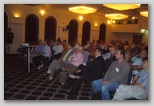
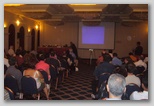
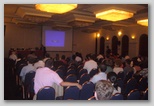
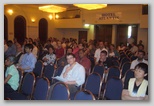
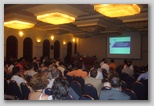
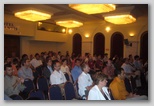
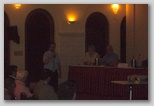
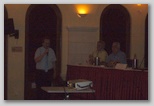
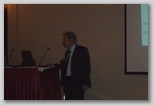
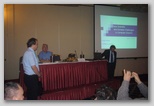
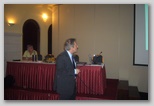
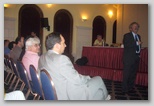
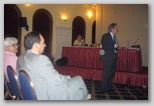
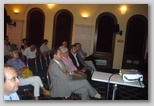
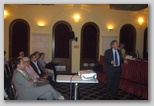
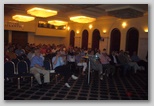
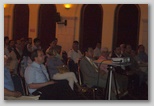
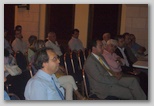
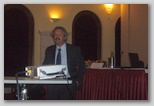
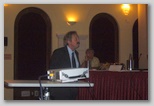
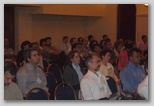
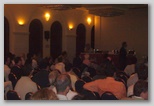
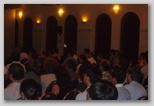
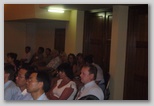
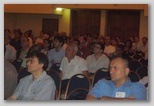
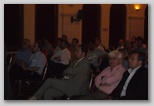
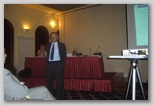
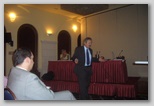
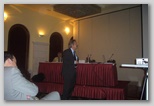
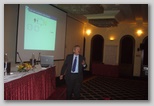
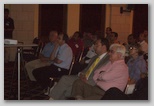
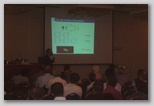
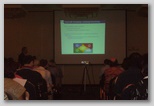
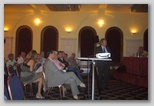
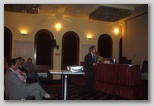
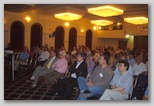
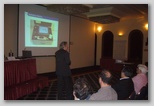
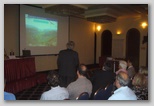
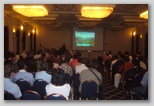
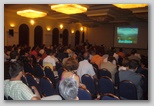
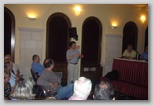
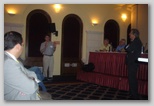
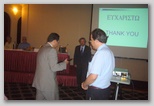
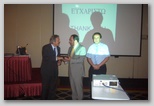
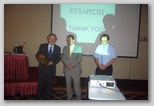
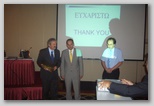
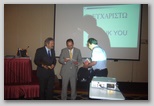
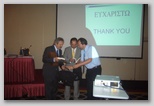
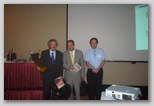
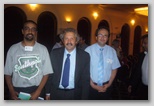
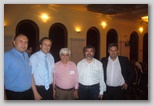
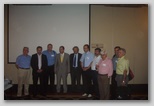
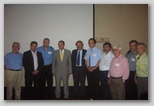
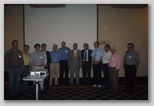
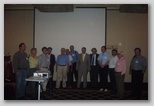
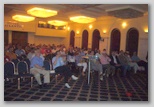
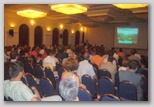
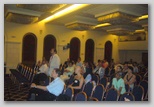
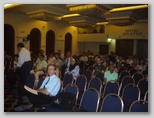
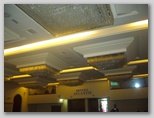
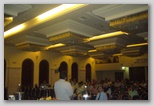
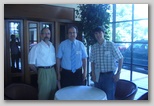
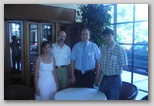
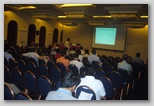
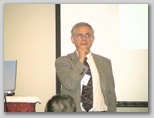
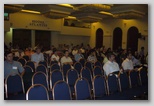
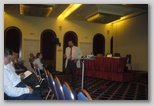
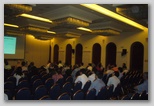
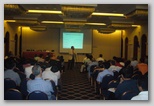
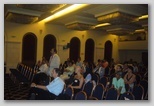
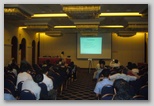
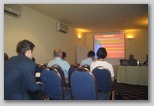
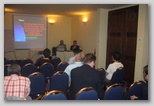
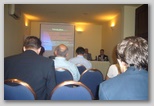
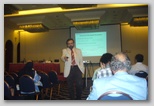
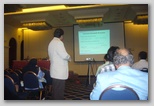
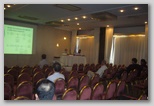
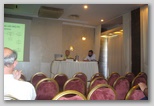
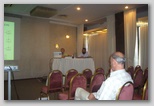
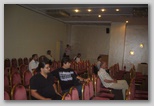
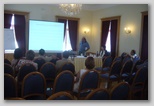
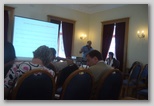
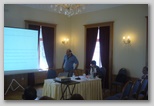
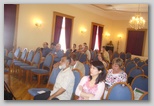
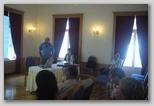
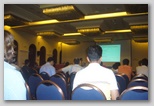
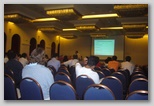
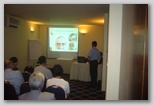
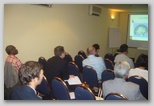
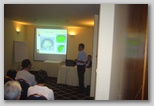
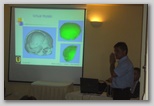
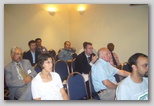
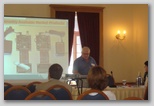
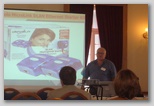
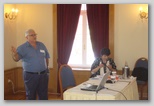
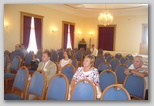
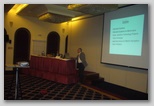
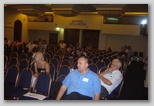
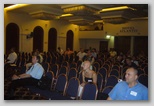
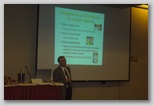
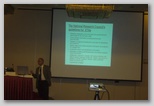
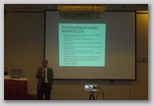
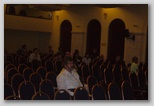
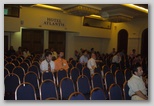
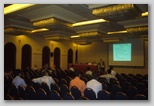
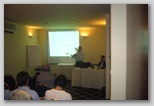
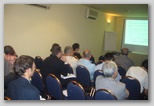
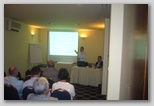
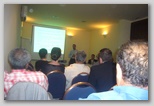
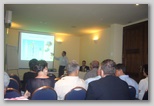
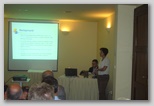
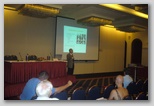
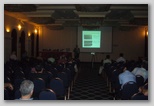
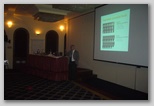
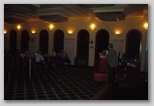
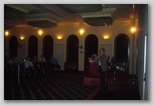
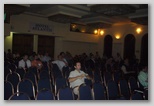
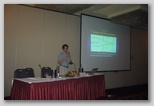
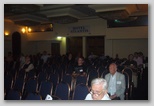
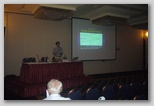
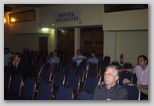
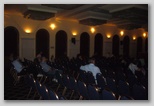
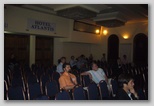
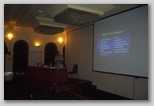
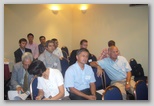
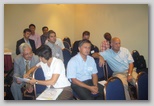
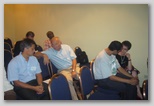
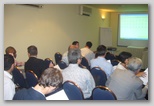
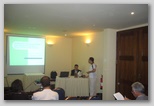
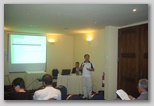
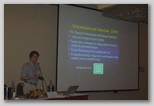
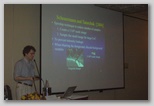
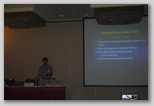
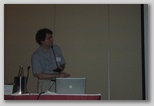
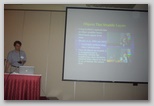
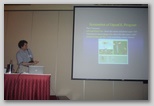
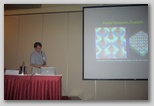
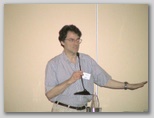
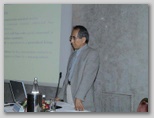
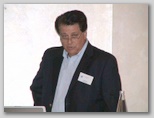
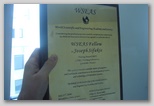
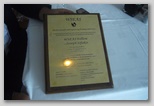
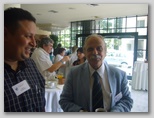
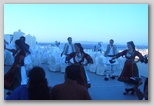
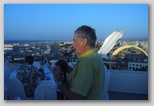
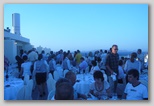
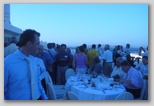
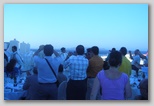


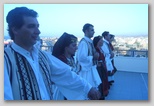
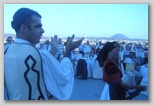
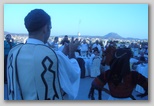
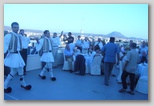
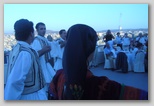
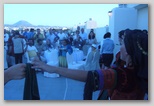
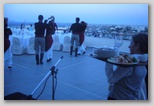
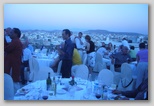
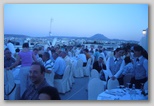
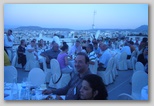
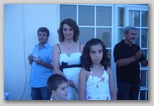
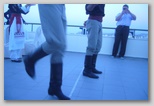
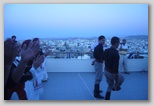


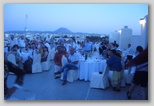
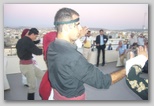
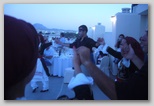
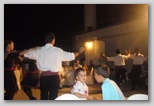
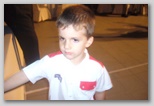
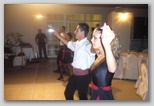
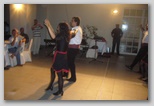
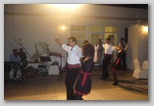
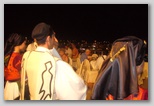
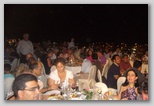
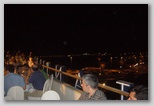
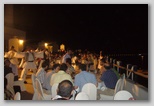
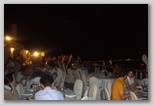

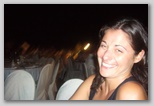
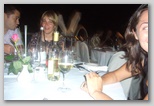
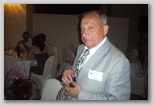
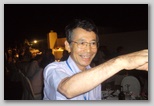
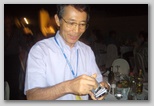
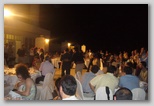
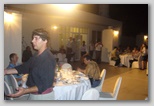
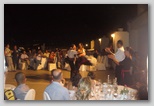
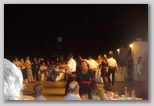


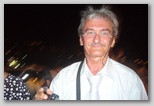
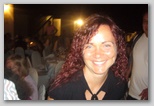
Review Process:
Each paper was reviewed at least by 3 independent reviewers. The WSEAS
Secretariat sent each paper to 5 reviewers. Some papers received reviews from 5
different referees. The WSEAS Secretariat forwarded these comments by
personalized emails to the responsible for the correspondence author. The full
list of the reviewers will be available in the web page:
http://www.worldses.org/reviewers.htm
Best Papers (Evaluated by
committees of 6 international experts, different for each discipline)
See here the best papers Click:
http://www.wseas.us/reports/2008/best2008.htm#july2008
Additional features of the conferences :
1) Publication of the Proceedings in 3 media: hard-copy, CD, E-Library
(A)
Five books in the "Electrical and Computer Engineering Series" of WSEAS
(see
details, contents, author indices and editors below) with ISBN and ISSN
indexed by the major Citation Indices (ISI ranked):
www.worldses.org/indexes
(B)
CD-ROM Proceedings with pages' numbers
with ISBN and ISSN indexed by the major Citation Indexes:
www.worldses.org/indexes
(C)
E-Library:
http://www.wseas.org/online
and possible, for a very small number of papers:
(D)
JOURNAL PUBLICATION: Expanded and enhanced
versions of papers published in the conference proceedings also going to be
considered for possible publication in one of the WSEAS journals that
participate in the major International Scientific Indices (Elsevier, Scopus, EI,
Compendex, INSPEC, CSA .... see:
www.worldses.org/indexes ).
2)
WSEAS provides a very important tool to all the participants; a permanent
username and password for accessing WSEAS conference proceedings on-line for
ever.
3) The Participants received numerous coffee-breaks, and a Welcome Drink
4) Cultural and social activities as customary in WSEAS events.
5) The conference Books (Hard-Copy Proceedings), CD-ROM proceedings and Journals
(with selected papers) published by WSEAS Press continue to sell for a long time
after the meeting has taken place. This is another demonstration of the prestige
the scientific community attribute to the meetings organized by the WSEAS.
For example, they are distributed via AMAZON:
WSEAS @ AMAZON.COM
Best Papers (evaluated by committees of 6 international experts, different for each discipline)
For the 12th WSEAS International Conference on CIRCUITS, Heraklion, Greece, July 22-24, 2008
Fluency DA Functions
as Non-uniform Sampling Functions for Interpolating Sampled-values pp.
302-309
Kazuki Katagishi, Kenichi Ikeda, Mitsuteru Nakamura, Kazuo Toraichi, Yasuhiro
Ohmiya, Hitomi Murakami
For the 12th WSEAS
International Conference on SYSTEMS, Heraklion, Greece, July 22-24, 2008
For the 12th WSEAS International Conference on COMMUNICATIONS, Heraklion, Greece, July 22-24, 2008
Comparison Between
Different Chromatic Dispersion Compensation Schemes in High Bit Rate
Communication Systems with Important Non Linear Effects, pp. 110-116
Lazoul Mohamed, Simohamed Lofty Mokhtar, Boudrioua Azzedine
For the 12th WSEAS International Conference on COMPUTERS, Heraklion, Greece, July 22-24, 2008
Observations
Concerning the Dynamics for k-Order Nonlinear Discrete Determinist Exchange
Rate Models, pp. 595-600
Mirela-Catrinel Voicu
and
Vector Fractional Programming with Quasiinvexity on Riemannian Manifolds,
pp. 1107-1113
Stefan Mititelu and Constantin Udriste
For the 1st WSEAS/IASME International Conference on ENGINEERING EDUCATION (EE '08), Heraklion, Crete, Greece, July 22-24, 2008
Development of a
Dynamical Software for Teaching Plane Analytical Geometry, pp.55-60
Anca Iordan, George Sav , Manuela Pănoiu, Caius Pănoiu
For the
1st WSEAS International Conference on ENGINEERING MECHANICS, STRUCTURES,
ENGINEERING GEOLOGY (EMESEG '08), Heraklion, Crete, Greece, July 22-24, 2008
Modelling Muddy Flash Floods and
Debris Flows, pp.286-291
B. Nsom
For the 1st WSEAS International
Conference on URBAN PLANNING and TRANSPORTATION (UPT'07), Heraklion, Crete,
Greece, July 22-24, 2008
A Modified Arc Routing Problem for Highway Feature Inspection Considering
Work-Shift and Overtime Limit Constraints, pp. 105-110
Manoj Jha, Francis Udenta, Simon Chacha, Gautham Karri
For the 1st WSEAS International Conference on CULTURAL HERITAGE AND TOURISM (CUHT'08), Heraklion, Crete, Greece, July 22-24, 2008
Environmental Designing Parameters Regarding Sustainable Tourism Among Coastline
Cities
With Comparisons In Turkey, pp.13-16
Pelin Yildiz
Books (hard-copy of the Proceedings):
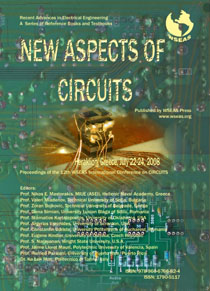 New
Aspects of Circuits
New
Aspects of Circuits
Editors: Nikos E. Mastorakis, Valeri Mladenov, Zoran Bojkovic, Dana Simian,
Stamatios Kartalopoulos, Argyrios Varonides, Constantin Udriste, Eugene Kindler,
S. Narayanan, Jaime Lloret Mauri, Hamed Parsiani, Ka Lok Man.
Pages: 480 pages,
Price: 110 EUR
[Contents],
[Order],
[Full PDF of the Papers],
[Help]
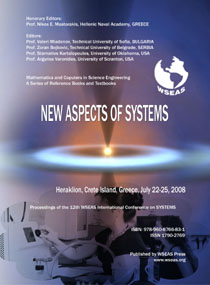 New
Aspects of Systems
New
Aspects of Systems
Editors: Nikos E. Mastorakis, Valeri Mladenov, Zoran Bojkovic, Dana Simian,
Stamatios Kartalopoulos, Argyrios Varonides, Constantin Udriste, Eugene Kindler,
S. Narayanan, Jaime Lloret Mauri, Hamed Parsiani, Ka Lok Man.
Pages: 830 pages,
Price: 190 EUR
[Contents],
[Order],
[Full PDF of the Papers],
[Help]
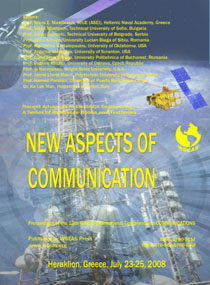 New
Aspects of Communications
New
Aspects of Communications
Editors: Nikos E. Mastorakis, Valeri Mladenov, Zoran Bojkovic, Dana Simian,
Stamatios Kartalopoulos, Argyrios Varonides, Constantin Udriste, Eugene Kindler,
S. Narayanan, Jaime Lloret Mauri, Hamed Parsiani, Ka Lok Man.
Pages: 480 pages,
Price: 110 EUR
[Contents],
[Order],
[Full PDF of the Papers],
[Help]
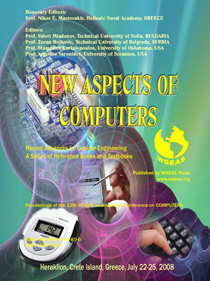 New
Aspects of Computers
New
Aspects of Computers
Editors: Nikos E. Mastorakis, Valeri Mladenov, Zoran Bojkovic, Dana Simian,
Stamatios Kartalopoulos, Argyrios Varonides, Constantin Udriste, Eugene Kindler,
S. Narayanan, Jaime Lloret Mauri, Hamed Parsiani, Ka Lok Man.
Pages: 1140 pages,
Price: 250 EUR
[Contents],
[Order],
[Full PDF of the Papers],
[Help]
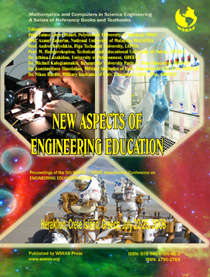 New
Aspects of Engineering Education
New
Aspects of Engineering Education
Editors: Jaime Lloret Mauri, Azami Zaharim, Andrei Kolyshkin, M. Hatziprokopiou,
Athina Lazakidou, Michail Kalogiannakis, Konstantinos Siassiakos, Nikos Bardis.
Pages: 480 pages,
Price: 110 EUR
[Contents],
[Order],
[Full PDF of the Papers],
[Help]
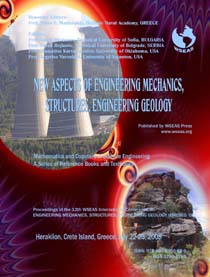 New
Aspects of Engineering Mechanics, Structures and Engineering Geology
New
Aspects of Engineering Mechanics, Structures and Engineering Geology
Editors: M.-K. Nikolinakou, George Tsekouras, Vassilis Gekas, Dimitrious Pavlou.
Pages: 400 pages,
Price: 90 EUR
[Contents],
[Order],
[Full PDF of the Papers],
[Help]
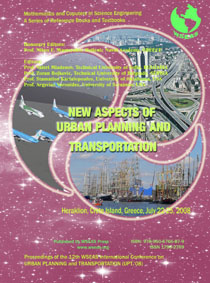 New
Aspects of Urban Planning and Transportation
New
Aspects of Urban Planning and Transportation
Editors: Thomas Panagopoulos, Jon Bryan Burley, Selma Celikyay.
Pages: 130 pages,
Price: 50 EUR
[Contents],
[Order],
[Full PDF of the Papers],
[Help]
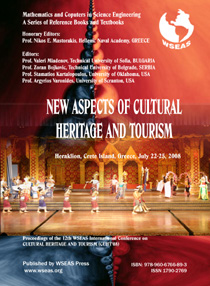 New
Aspects of Cultural Heritage and Tourism
New
Aspects of Cultural Heritage and Tourism
Editors: Vassilis Gekas, Nikos E. Mastorakis, Eleni Stamatiou.
Pages: 160 pages,
Price: 50 EUR
[Contents],
[Order],
[Full PDF of the Papers],
[Help]
JOURNALS:
What is the Permanent Procedure for additional Journal publication for a very
small number of High-Quality Papers presented in the WSEAS Conferences in (after
the recommendation of Chairmen). So, the authors with accepted & presented
papers received the following e-mail:
We have started now the procedure for the evaluation of the extended versions of
your papers for possible inclusion in the WSEAS journals after new rounds of
review.
INTRODUCTION: You know that our goal is to maintain very strong
international journals, to increase the impact of our beloved WSEAS
Transactions, really top journals as they really are. To this end, we need only
high quality papers, breakthrough works of archival value, i.e. papers that are
well written from any point of view, completed studies (with their numerical
examples or experiments that must be compared with the previous results in the
literature), excellent English language and of course correct WSEAS format. The
papers also must be substantially extended version of the paper that was
presented in the conference (with more than 40% new material). We need papers
that will attract the attention of other scholars citing them increasing our
impact. In the next few years, the WSEAS transactions must be in every academic
library, in every corner of the earth. To this end, we need your high quality
contribution.
HOW TO PROCEED:
a) Check very carefully if your idea is really important, breakthrough in your
field and can appear in a Journal of the quality and the level of the WSEAS
Transactions. If you doubt, do not send it so easily. Your paper must not be
only a good idea. It must be a complete study with theoretical background,
complete bibliographical references; without grammatical and syntactical errors.
For theoretical works: full comparison with previous published papers is
necessary. We need numerical examples, applicability of the method, originality,
novelty and directions for future research. For experimental or computational
works: full comparison with previous published papers is necessary. We need real
experiments with the necessary documentation, while for computational work, we
need full benchmarks. Of course along discussions for the applicability of the
method, originality, novelty and directions for future research.
b) Complete the extended version of your paper and upload it via
http://............... (the full web address was given only to
authors who presented a paper)
c) If your extended version fulfills the paragraph a), then our Editors will
send it to 3 independent Reviewers outside your country. If not, our Editors are
entitled to reject it from this early stage informing you properly. The positive
answer of the 3 reviewers is necessary (attention: 2 yes and 1 no implies NO,
i.e. rejection).
d) Our Editors will collect the reviewers' remarks and will send them again to
you for acceptance/ acceptance after minor revision / acceptance after major
revision / rejection
e) Possibly new rounds of review will be needed.
f) No additional fee is needed in case of acceptance.
http://www.worldses.org/journals/index.html
The final list of the papers must have the approval of our Editors and 3
Reviewers, and of course the Editor-in-Chief of the particular Journal.
We want only authors that presented their papers to complete this web form:
http://............... (the full web address was given only to
authors who presented a paper) So, in this form you will need a password (the
password was given only to the authors who presented a paper).
INDICES:
PROCEEDINGS: The Proceedings related to the Conference are covered by:
01. ISI (ISINET)
02. INSPEC (IET, former IEE)
03. CSA (Cambridge Scientific Abstracts)
04. ELSEVIER and Elsevier Bibliographic Database
05. ZENTRALBLATT
06. ULRICH
07. MATHSCINET of AMS (American Mathematical Society)
08. MATHEMATICAL REVIEWS of AMS (American Mathematical Society)
09. Directory of Published Proceedings
10. Computer Science Bibliography Administrator
11. American Chemical Society and its Index: Chemical Abstracts Service
12. European Library in Paris (France)
13. DEST Database (Australia)
14. Engineering Information
15. SCOPUS
16. EBSCO
17. EMBASE
18. Compendex (CPX)
19. GEOBASE
20. BIOBASE
21. BIOTECHNOBASE
22. FLUIDEX
23. OceanBase
24. BEILSTEIN Abstracts
25. World Textiles
26. MEDLINE
27. British Library
28. National Library of Greece
29. German National Library of Science and Technology
30. IARAS Index
JOURNALS:
The WSEAS journals are covered by:
01. ISI through the INSPEC (IEE)
02. INSPEC (IET, former IEE)
03. CSA (Cambridge Scientific Abstracts)
04. ELSEVIER and Elsevier Bibliographic Database
05. ZENTRALBLATT
06. MATHSCINET of AMS (American Mathematical Society)
07. ULRICH
08. MATHEMATICAL REVIEWS of AMS (American Mathematical Society)
09. Computer Science Bibliography Administrator
10. British Library
11. American Chemical Society and its Index: Chemical Abstracts Service
12. European Library in Paris (France)
13. DEST Database (Australia)
14. Swets Information Services
15. Engineering Information
16. SCOPUS
17. EBSCO
18. EMBASE
19. Compendex (CPX)
20. Geobase
21. BIOBASE
22. BIOTECHNOBASE
23. FLUIDEX
24. OceanBase
25. BEILSTEIN Abstracts
26. World Textiles
27. MEDLINE
28. Mayersche
29. Index of Information Systems Journals
30. National Library of Greece
31. IARAS Index
From these
excellent and well-organized conferences, WSEAS Press published also 2 Books
that contain the conference proceedings.
Please, order them from the WSEAS Press:
http://www.worldses.org/books/index.html
.:
SOCIAL PART (Coffee-Breaks, Banquet, Excursions)
6 coffee-breaks - light lunches: Coffee, Tea, Milk, Sandwiches, Sweets,
Cakes, Pastries, Juices were available for the Guests during the conference.
A wonderful Gala with more than 50 different courses (self-service buffet) were
given to the participants in the evening of the second day of the conferences.
Most of the participants danced and enjoyed themselves during this fantastic
night.
.: See your
feedback about the Conference:
http://www.worldses.org/feedback.htm